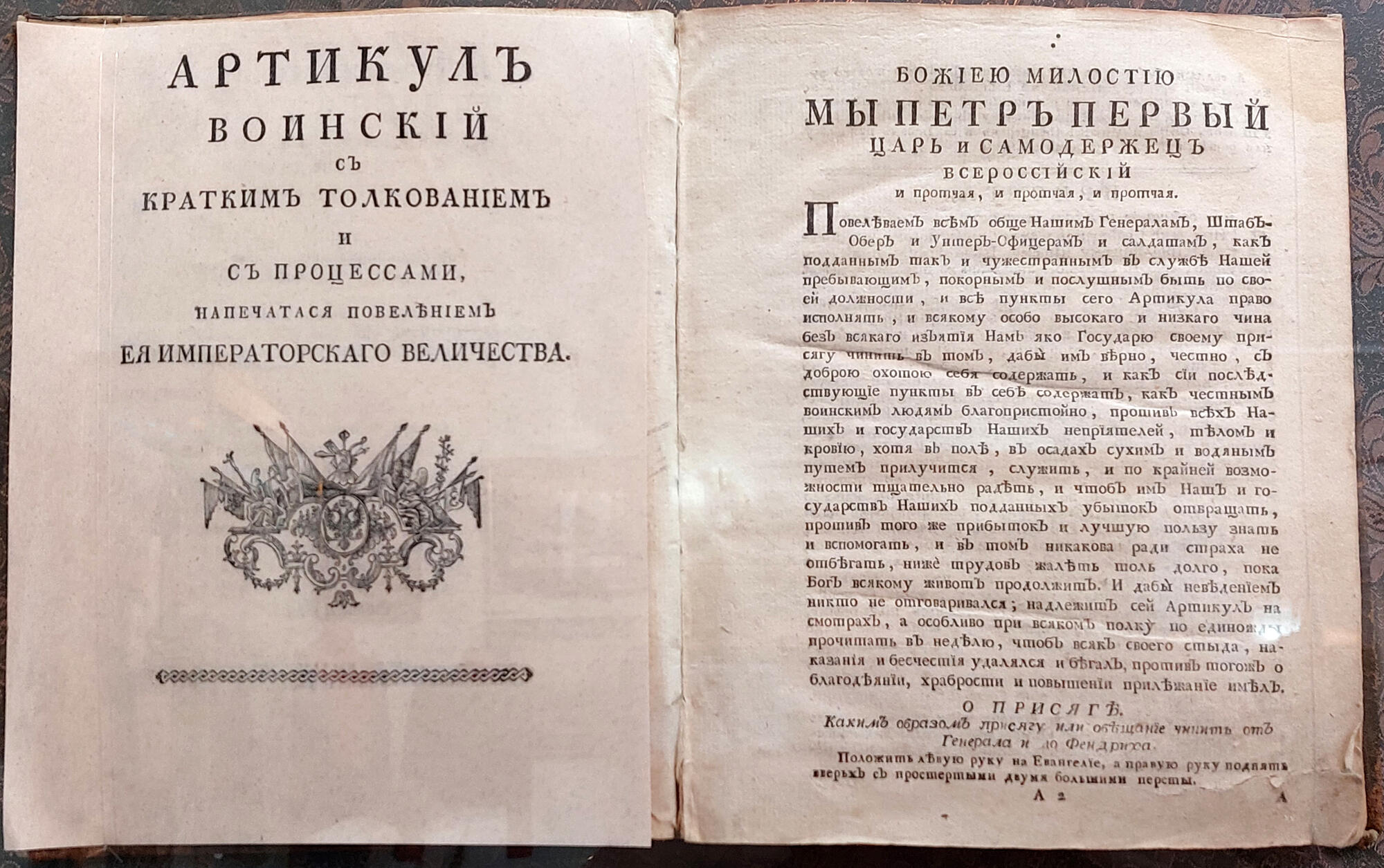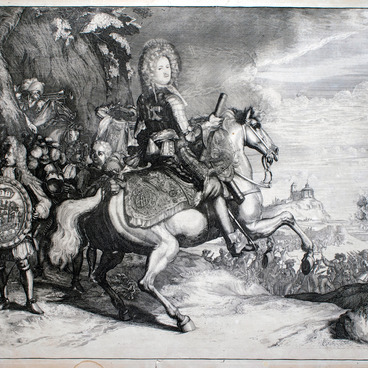The “Military Charter of Peter the Great” presented in the exhibition was published in parts from 1715 to 1717 (“Army Regulations with a Brief Description of the Processes”, “On the Exercises and Preparations for the March” and the military charter itself, which included military-administrative, judicial and other norms). In 1719, all three parts were published in a single edition.
The development of the regulations began under the direct supervision of Peter the Great at the end of the 17th century. General Adam Adamovich Veyde, who studied military organization in Hungary, Count Yakov Vilimovich Bruce and the Inspector of Artillery Andrey Andreyevich Vinius took part in creating this document.
The “Army Regulations” included 24 chapters divided into 209 articles with explanations and examples. It was based on a compilation of Imperial German, Danish, and Dutch legal sources. The most significant of which was the military regulations of Gustav II Adolf in the “new Swedish edition” from 1683, published under Charles XI.
There was no direct definition of crime, however, from the content of specific articles it could be interpreted as a “violation of the law and the Tsar’s orders”. It was supposed to distinguish between an intentional and attempted (bare intent) crime committed by negligence or in a state of passion; forensic medical examination was introduced (particularly, for rape accusations). The judicial process was also described in detail. Enacting any penalties on the suspect — including fines — was forbidden without trial.
At the same time, the punishments themselves, in comparison with European primary sources or the Council Code (Sobornoye Ulozheniye) of Tsar Alexis (1649), became extremely specific and more severe.
The document contained articles on such crimes as crimes against the faith and the administration of church rites, political crimes (rebellion, treason, condemnation of the actions of the Tsar), military crimes (desertion, looting, surrender of fortresses), occupational crimes, crimes against the court and the order, safety, crimes against individuals (for example, slanderers received punishment for crimes they falsely accused the other person of commiting), crimes against property and against morality.
As punishment, the criminal may have been subjected to death, corporal punishment (including branding or cutting off body parts), exile to galleys, hard labor, prison, confiscation of property or fines. Officers could be threatened with resignation (temporary or permanent), demotion in rank or arrest.
The “Military Charter” formed the basis of Peter the Great’s legal reforms and remained in operation until the Digest of Laws of 1832 was established. The document was valid in both military and civil proceedings.

